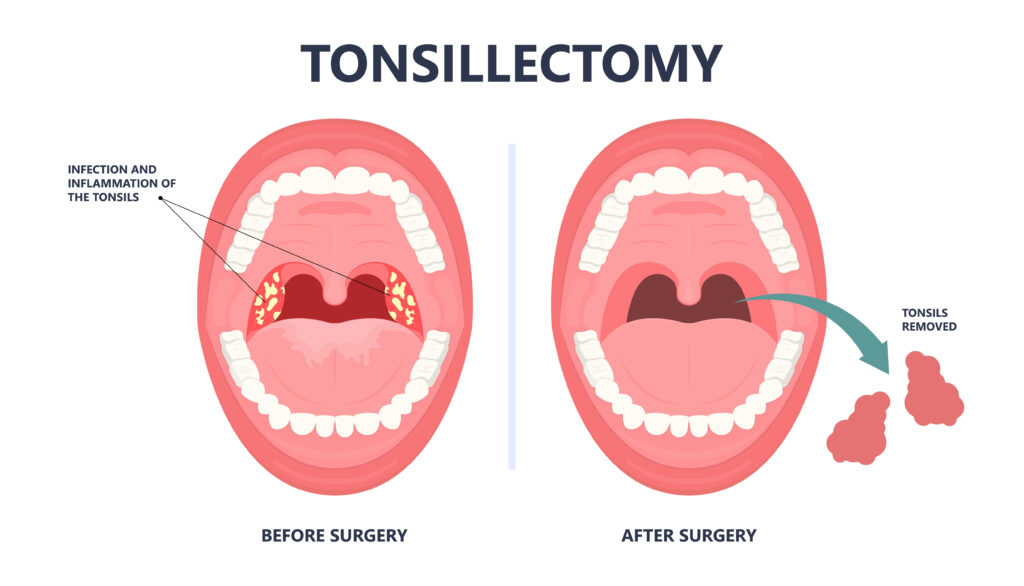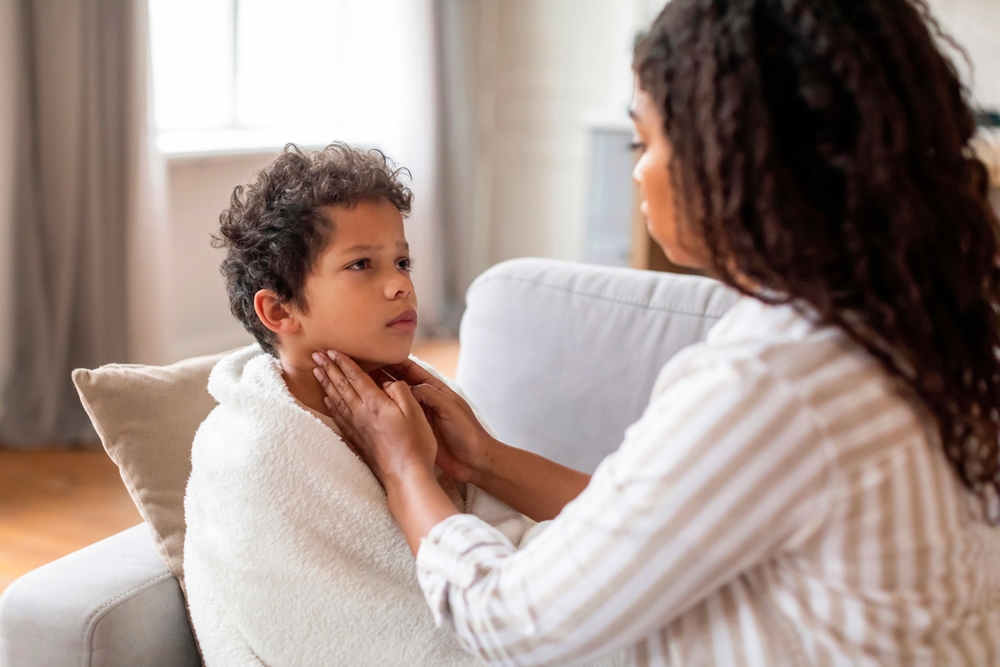Posted by: Maryland ENT in General
Tonsillectomy is a common procedure that can help your child breathe easier, sleep better, and improve their quality of life. If your child’s ENT specialist has recommended tonsillectomy, knowing what to expect during recovery can ease your worries and give you more confidence as you plan for the procedure.
Keep reading to learn more about what is the worst day of the recovery of tonsillectomy for a child.
What is a Tonsillectomy?
Tonsillectomy is a surgical procedure to remove tonsils. Tonsils are the pair of oval-shaped lymphoid tissues situated at the back of the throat, one on each side.
They’re part of the immune system and contain white blood cells that kill germs entering through the mouth and nose. Your child’s ENT specialist may recommend a tonsillectomy if your child’s tonsils are frequently infected or enlarged and cause breathing issues, such as persistent snoring and sleep apnea.

Tonsillectomy is typically performed under general anesthesia as an outpatient procedure unless there are complications. It can also be an inpatient procedure for children with other health issues or severe symptoms prior to tonsillectomy.
What is Recovery Like after Tonsillectomy?

Once your child is awake after their procedure, they’ll be taken to the recovery room, where you can join them. They’ll be under observation for a few hours before being discharged.
While recovery varies from patient to patient, it can take up to 2 weeks. Your child will need to rest during this period or until their ENT specialist says they can resume normal activities.
You may notice yellow-white patches inside your child’s mouth. These are known as tonsillectomy scabs.
They form fast and appear as thick, yellow-white patches on each side where the tonsils were removed and tend to cause bad breath. Minor bleeding is normal as the scabs fall off.
They fall out in tiny pieces between 5 to 10 days after tonsillectomy, and your child will likely swallow the scabs without realizing it. Other side effects of tonsillectomy may include:
- Nausea or vomiting
- Headache
- Voice change
- Slight throat swelling
- Low-grade fever between 99°F and 100°F
What is the Worst Day of Recovery after Tonsillectomy?

Pain is expected post-procedure. Your child may experience discomfort and pain for 10 to 14 days.
They may have a sore throat, jaw pain, earache, and neck pain that tends to be more severe in the morning. Usually, pain during recovery gets worse before it gets better.
It may build up within the first few days, worsening about 5 to 7 days after tonsillectomy when the scabs fall off. After that, the pain gradually reduces.
While older children can tell you if they’re in pain, younger ones may not be able to. If you have a younger child, poor sleep, quiet or withdrawn behavior, restlessness, and refusal to drink or eat can be tell-tale signs of increased pain.
Their ENT specialist will prescribe pain medications, and it’s crucial that you follow the dosage instructions to minimize their pain as much as possible. Setting a timer can help remind you when to give your child the next dose.
In addition to pain medicine, you can offer distractions such as games, music, new toys, or movies to take their focus away from the pain.
How Can You Help Your Child Heal after Tonsillectomy?
Here’s how you can care for your child at home and help them recover successfully and as soon as possible:
Rest
Encourage them to rest for at least the first 48 hours post-surgery. You can apply ice packs on their throat to help relieve pain.
For approximately 2 weeks, limit traveling and rigorous activities like running, bike riding, and sports until their ENT specialist clears them. Be sure to attend all of your child’s follow-up appointments to allow the ENT specialist to monitor their progress and detect and address potential complications early.
Hydration
Ensure they drink plenty of liquids to keep them properly hydrated. Lukewarm or cold drinks are recommended during the first 24 hours, including water, flavored ice pops, broth, and apple juice.
Have them take small sips regularly, all through the day. You can also run a humidifier in their room to add moisture to the air.
This can keep their throat moist and make it easier for them to breathe.
Diet

Once they’re ready to eat, give them soft foods for the first week, such as apple sauce, scrambled eggs, pudding, soft cereal, mac and cheese, soft noodles, ice cream, soups, and mashed potatoes. Steer clear of hard, crunchy, hot, and spicy foods, which can tear at the scabs, worsen the sore throat, and cause more pain.
Introduce semi-solid and solid foods when your child can swallow without pain.
When Should You Call Your Child’s ENT Specialist?
Contact their ENT specialist or take them to the emergency room if your child is presenting with:
- Fever of over 100°F
- Inability to drink
- Frequent swallowing, which could indicate bleeding
- Fresh blood from the mouth, nose, or in their vomit
- A change in alertness, such as confusion, passing out, or unresponsiveness
- Breathing problems such as wheezing, difficulty breathing, shortness of breath, or labored breathing
- Inability to pass gas, urinate, or have bowel movements
- Vomiting more than 4 times within the first 24 hours post-surgery
- Signs of dehydration like dry mouth, sunken eyes, dark or no urine, looking unwell
- Unexpected redness, swelling, drainage, or pus in the mouth or nose
Trusted Tonsillectomy Experts
Your child may benefit from a tonsillectomy if they have recurring tonsil infections or enlarged tonsils. Tonsillectomy at Maryland ENT is performed by our experienced ENT specialists with state-of-the-art technology and techniques to minimize pain and speed up recovery.
Do you think your child may need a tonsillectomy? Schedule an appointment at Maryland ENT, in Baltimore, MD, today to find out if the procedure could help improve their symptoms.



